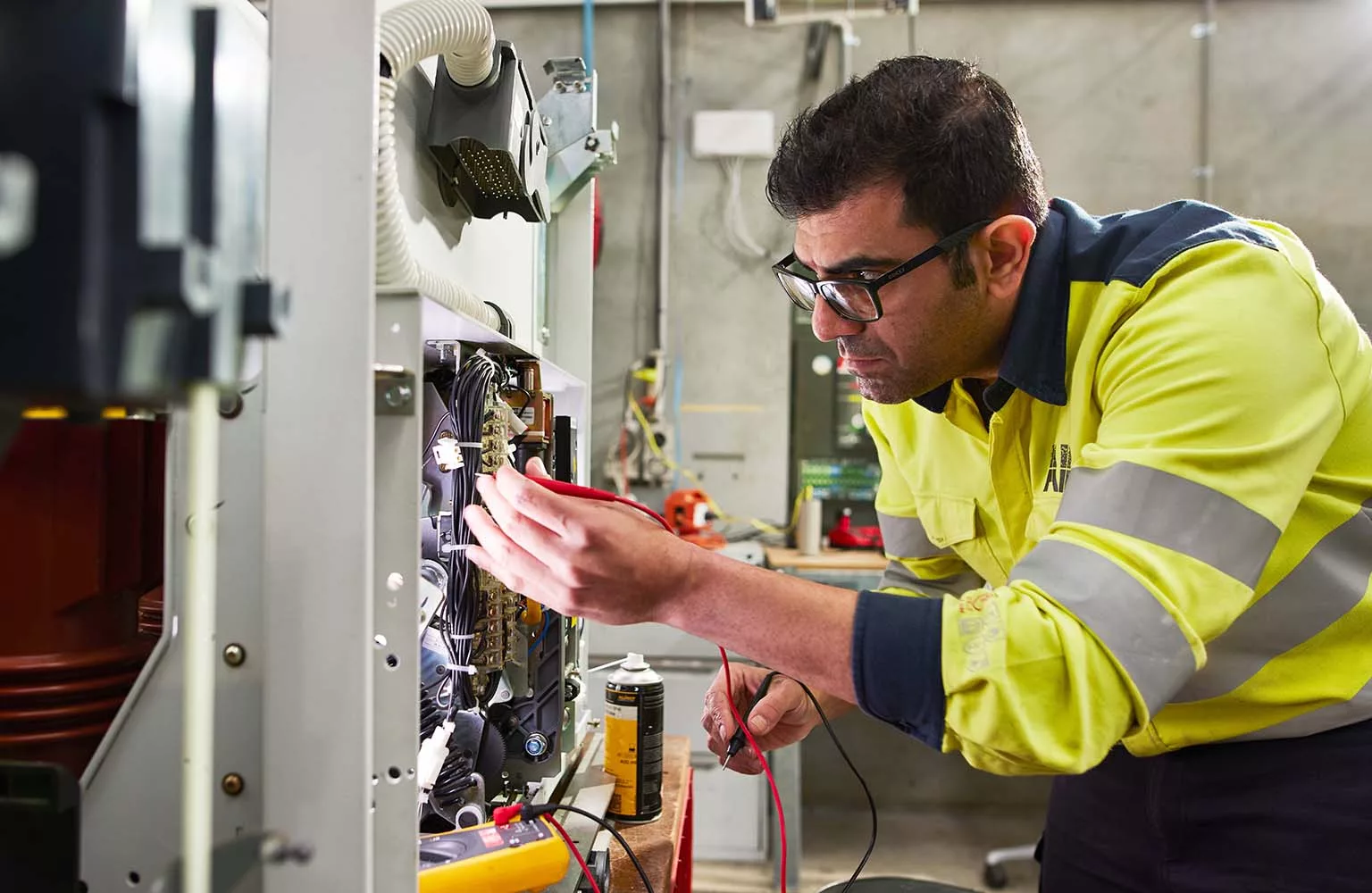The world is in the midst of an ‘electric revolution’, but our grids are creaking under the weight of demand. Pedro Robredo, Senior Vice President for ABB Electrification Services in the Americas, discusses the importance of reviewing existing networks for weak points where risk of failure brings high costs.
With the rapid growth in electrification, driven by electric mobility, heating and ventilation, data centers, and emerging industries to name just a few, it’s becoming clear that the world needs innovative approaches to balance the grid – and fast.
In the US, the government is prioritizing grid resilience like never before. With nearly 70 percent of the nation’s grid more than 25 years old, the White House is making historic investments that will strengthen the transmission grid to drive down energy costs, generate well-paid jobs, and help keep the lights on during extreme weather events.
The Department of Energy estimates that outages alone cost the US economy $70 billion annually and this is only set to worsen without modernizing and expanding the domestic power grid.
But it’s not just about modernizing by building bigger and better to resolve the issue of energy security and reliability. Not only is this an impractical solution – as the lead time on commissioning new electrical equipment is long, which puts time constraints on the pressing need to update infrastructure – it’s also non-sustainable. Consider, for example, the additional mining of iron ore and copper along with the carbon footprint to manufacture and deliver such equipment.
That’s why forward-thinking organizations are seeking more sustainable solutions by adopting the 3Rs – repair, refurbish, and retrofit.
And rather than seeing service as a reactive intervention, they are recognizing the benefits of a consultative and preventative approach. Why? Because running a piece of critical equipment to the point of failure could cost up to 10 times more than investing in a program of regular maintenance to extend the life cycle and productivity of electrical assets, in addition to avoiding the environmental impact of buying new equipment.

PRODUCTION AND ENERGY EFFICIENCY
One of the greatest opportunities for carbon, material, and cost savings is retrofitting – upgrading outdated components so that the existing electrical system lasts longer and runs as efficiently possible, which in turn minimizes the risks of breakdowns and expensive downtime.
In fact, 50 percent of electrical equipment like metal cabinets, steel plates, and busbars – products with high embedded carbon and material footprints – can be used perpetually without being replaced if outdated components such as circuit breakers, electrical switches, fuses, and contactors are regularly monitored, maintained, and upgraded.
With this approach, we have seen some of ABB’s clients’ facilities reduce the cost of operating equipment by a third while extending the lifetime of critical infrastructure by as much as 30 years.
In terms of best practice, early adopters are taking a preventative approach, replacing older, non-digital circuit breakers with more intelligent, digitally enabled breakers linked to cloud computing platforms that enable the seamless provision of value-added services.
These can provide real-time data and analysis on asset condition, performance, and potential safety issues, helping operators prevent potential hazards before they arise and minimizing disruptions to production.
For example, one of our US blue-chip food and beverage customers has recognized the value of ABB Electrification’s advisory services, giving them the benefit of engineering experts on the ground to provide a thorough assessment of their sites and provide solutions for whatever problems they discovered, even when dealing with competitor products.
The value of the advisory service report has already paid dividends by identifying issues before they became critical, fixing them and boosting production and energy efficiency. It’s this level of knowledge that is so valued in a market that is sadly seeing a declining level of expertise.
In other words, such partnerships show where energy use can be optimized, or where equipment requires maintenance and simple and cost-effective fixes to lower energy consumption and reduce the risk of outages.
Whether operating a utility in heavy industries such as oil and gas, or tightly controlled industrial environments such as food and beverage manufacturing, this is business critical as even a brief black-out can result in severe production losses, with devastating knock-on impacts on revenue.
This is where retrofitting equipment with more advanced, digitally enabled products and systems is really taking off.
A NEW MODEL OF MAINTAINING EQUIPMENT
Digital energy and asset management solutions, which have monitoring and diagnostic capabilities, offer companies the potential to shift to a new, predictive, proactive model of maintaining their equipment.
At present, the norm for many companies is to let their electrical equipment run for a few years before shutting down for one or two weeks to check for any issues. But with condition-based maintenance, the equipment itself identifies if something is outside of normal parameters so issues can be addressed before they become failures.
Such an ‘intelligent’ approach not only makes financial sense, but also ensures that the lifetime of machinery is optimized, with equipment failures and production stoppages minimalized.
The journey to improved grid stability in the US will not be an easy one. It will require greater innovation and ingenuity to achieve much more with much less, all while continuing to use the existing power grid infrastructure and simultaneously transitioning to a new one.
However, by leveraging new technologies and retrofitting dated components with digital upgrades, utilities can achieve improved grid stability with greater ease and speed.









